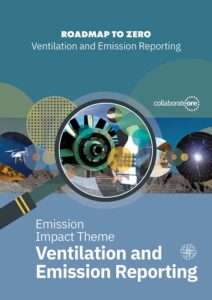 In the ever-changing global commodity landscape, the copper industry stands at a pivotal juncture. Faced with accelerating demand, primarily fuelled by its indispensable role in renewable energy and electrification, the industry must navigate the intricacies of supply chain dynamics. Upstream, or primary copper production remains a critical and strategic process, and many companies are examining their carbon footprint while exploring pathways for technology adoption to address emissions at an operational level.
In the ever-changing global commodity landscape, the copper industry stands at a pivotal juncture. Faced with accelerating demand, primarily fuelled by its indispensable role in renewable energy and electrification, the industry must navigate the intricacies of supply chain dynamics. Upstream, or primary copper production remains a critical and strategic process, and many companies are examining their carbon footprint while exploring pathways for technology adoption to address emissions at an operational level.
A critical aspect of the upstream copper production process is the role of ventilation and emission reporting. The significance of these functions exceeds mere operational necessity but extends to employee safety, environmental stewardship, and assurance. A functional and efficient ventilation system will influence the energy intensity and operating costs of a mine and contributes to a site’s emission profile and operational viability.
Since the inception of underground mining, the importance of adequate ventilation has been well recognised and has evolved significantly over time to meet the demands of modern mining operations characterised by high production levels, the use of diesel and electrified equipment, and the extraction of minerals from deeper and more complex deposits.
The design specifications and requirements for mine ventilation are also underpinned by the regulatory frameworks of the jurisdiction in which the mine operates, the mining method and inherent orebody settings, including thermal influences. Each mining operation is different, and advanced ventilation systems are designed to address unique site-specific requirements and challenges. These technical factors provide instruction and boundaries for innovation adoption.
The topic of emission reporting in the mining sector is highly complex. Adherence to international standards, juxtaposed with country-specific and emerging frameworks, presents a challenge to copper producers. A comparative analysis across a range of producers, key frameworks, and mining regions, including Chile, Peru, the DRC, North America, and Australia, reveals the nuanced landscape of emission reporting in mining and the need for harmonised practices.
Sector-wide initiatives for sustainable mining, institutional efforts, exemplified by the ICMM, The Copper Mark, and specific regional initiatives like Australia’s mining standards, set a range of frameworks to support sustainable mining practices. These collective endeavours are instrumental in shaping a more responsible mining sector.
The mining industry is witnessing accelerated activity in emission reporting and demonstration of sustainable practices. Developments, including Scope 3 emissions accounting, natural capital accounting, and mechanisms like Australia’s Safeguard Mechanism, are redefining the settings for environmental accountability. Moreover, the emphasis on ESG reporting and investment, coupled with global standard developments signals a shift towards integrated sustainability reporting across a range of industries.
Ventilation and Emission Reporting offers unique insights to address the challenges and opportunities in the Roadmap to Zero. It emphasises the importance of innovation, identifies systemic barriers in the industry, challenges traditional methodologies, and fosters a culture of collaboration and knowledge exchange that will be essential for creating sustainable change.
Download
Please enter your details below to download the report.
Full Report
Executive Summary